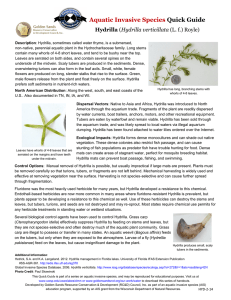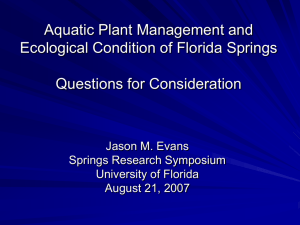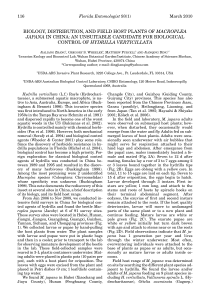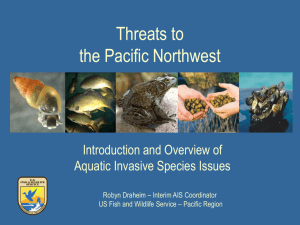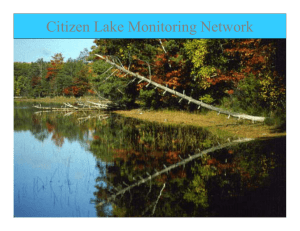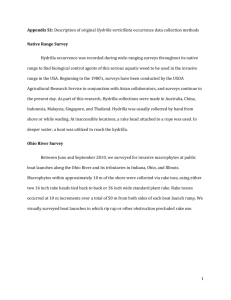Hydrilla verticillata
advertisement
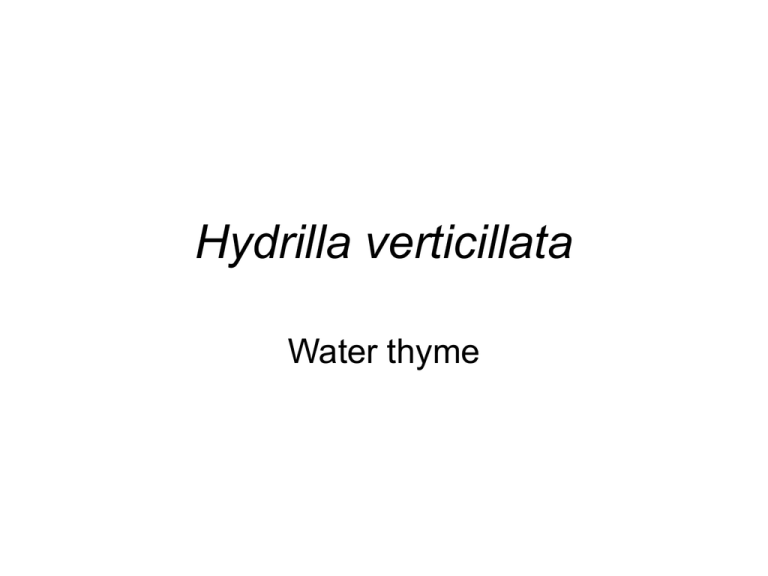
Hydrilla verticillata Water thyme HISTORY Origin – Possibly Africa, Asia, India, or Austrailia Introduced into Florida 1950’s for aquarium use – dioecious strain Appeared in the Patomac drainage in the 1970’s – monecious strain Has become the most expensive aquatic plant control project in the southeastern US DISTRIBUTION Since introduction, has spread to 690 bodies of water in 190 drainages in 21 states Is present in Pennsylvania: Schuylkill River, downtown Philly Lake Nockamixon – SW Pa Highland Lake – Bradford Co. PHYSICAL DESCRIPTION 4-8 leaves in whorls around stem – leaf margins saw-toothed Rooted – stems to 25’ long Profuse branching at the surface Produces both male and female flowers Is sometimes mistaken for the native plant Elodea canadensis GROWTH & REPRODUCTION Prolific reproducer – broken stems, seeds, turions, and tubers Can grow in any fresh water or sea water with a salinity of 7% South – overwinters as perenial North – overwinters as tuber and regrows from there Can grow in 1% of full sunlight CONTROL $5 million to control 7,600ha in Florida US Army Corps of Engineers $1 million to suppress hydrilla in Jacksonville Distric and $400,000 to supress in Lake Seminole Grass carp have been introduced as a control agent Asian Hydrilla Leaf Mining Fly Hydrilla tuber weevil POSITIVE ASPECT Has been discovered to be a biological remediation agent Shown to be capable of removing dissolved lead from a waterway REFERENCES http://www.ecy.wa.gov/Programs/wq/plants/weeds/hydrilla.html http://edis.ifas.ufl.edu/IG120 http://www.invasive.org/eastern/biocontrol/7Hydrilla.html http://www.dcnr.state.pa.us/Forestry/invasivetutorial/hydrilla.htm http://plants.ifas.ufl.edu/images/hydver/elocanc1.jpg http://plants.ifas.ufl.edu/node/183 http://plants.usda.gov/java/profile?symbol=HYVE3 http://nas.er.usgs.gov/taxgroup/plants/maps/Hy_verti_distr_us_Dec_03_web.JPG http://nas.er.usgs.gov/taxgroup/plants/docs/hy_verti.html http://cat.inist.fr/?aModele=afficheN&cpsidt=13903888 http://www.erie.psu.edu/seagrant/publications/fs/Hydrilla.pdf


